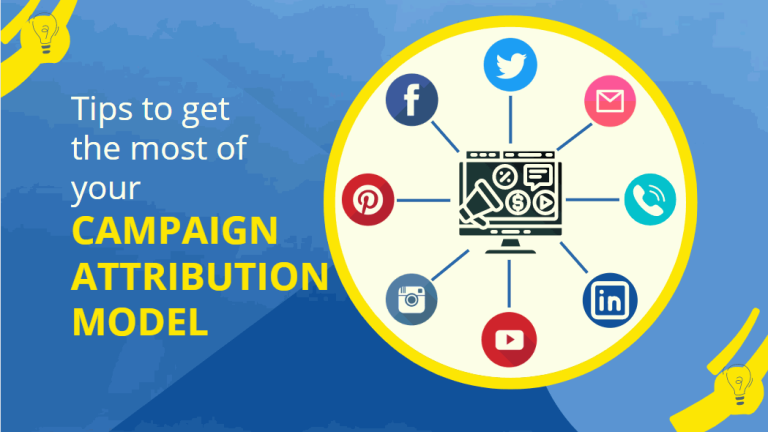Campaign attribution is the process of identifying and quantifying the sources of conversions. It’s important because it helps marketers understand how their marketing efforts contribute to business goals.
Campaign attribution means assigning a percentage of the credit for a sale or conversion to each touchpoint that influenced the customer. It is important to note that attribution models are not 100% accurate, and it’s impossible to account for every influence on the customer.

Key components of Campaign Attribution
There are four components of attributing campaigns:
- Marketing mix: Advertisements, Promotions, Publicity, and public relations.
- Media mix: TV, Radio, Print, and Online ads.
- Creative mix: Direct mail, Email, Social media posts, and Web banners.
- Consumer behavior: Customer’s action in response to marketing messages, like visiting a website or clicking on an ad.
Ways to get the most of your Campaign Attribution Model
1. Understand the Basic Principles
You can measure the success of a campaign by the metrics set before the campaign execution. It is important to understand the metrics and how it affects your campaign.
There are different types of metrics in marketing campaigns that you can use to measure the success of the campaign. The most common metric is the conversion metric.
Conversion metric Measures the number of people who have taken action after seeing your advertisement or content (i.e., converting).
2. Be Aware of Information Gaps
In the past, data was expensive and hard to come by. But now that we are in the era of big data, it is easier to collect and analyze data. However, there are still some gaps in data that you need to fill.
There are three main types of information gaps:
- Data gaps: We know there is more information out there, but we don’t have access to it
- Data limitations: We can’t collect all the information because of technological limitations or other factors
- Data biases: The data we have is not representative of the population because it is biased for one reason or another.
The most common way to overcome information gaps is by using secondary data sources. Secondary data sources are usually surveys, interviews, or focus groups. The key is to find out what information you need and then find a way to get it.
3. Understand Data Sources and Reporting Methods for Attribution Data
Understanding attribution data is crucial for any digital marketing professional. There are many methods of attribution modelling and data sources. Here you can find the basics of attribution modelling and the most common data sources for attribution data.
There are three main measurement methods: causal, linear, and last-click. The causal method is the most popular because it can measure how one campaign affects another campaign in a linear fashion. The last-click method was popular in the past but has been replaced by more advanced metrics such as cross-device conversions or first-touch points.
4. Use Multiple Data Sources to Increase Confidence in Your Results
Multi-source attribution modeling is an advanced technique that helps in attributing conversions to various channels. It considers data from multiple sources, such as paid search, organic search, social media, email campaigns etc., to calculate the contribution of each channel towards conversion rates.
5. Make sure the Model is Accurate
Your Campaign Attribution Model must be able to accurately attribute sales to specific marketing campaigns. It should also be able to account for the time lapse between when someone sees an ad and when they make a purchase.
6. Optimize your campaigns based on the data from your Attribution Model.
If you are not getting enough conversions, then this could mean that your ads are not working well enough or have too many competitors in the same space. You can use this information to modify or even stop running certain ads altogether if they are not working at all.
7. Leverage Historical Successes to Guide Future Decisions by Using a Marketing Simulation Tool
A marketing simulation tool is a computer-based software that simulates the behavior of a company’s market, customers, and competitors. It is an analytical tool will help you predict how your marketing strategy will work and the outcome.
There are many benefits to using a marketing simulation tool.
- The first benefit is the ability to test different strategies without any risk. You can see which strategy works best for your company and what needs to change if it doesn’t work as well as you had hoped.
- The second benefit is you can see the possible outcomes for different strategies in your company’s future, so that you can make an informed decision about which direction you want your company to go in.
Subscribe to blogs
Get our latest blogs directly to your inbox.

